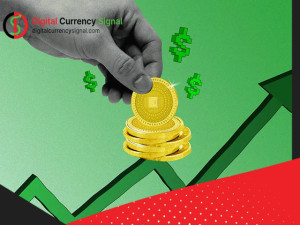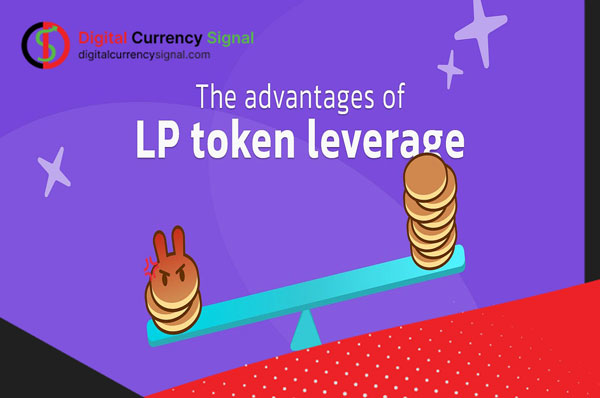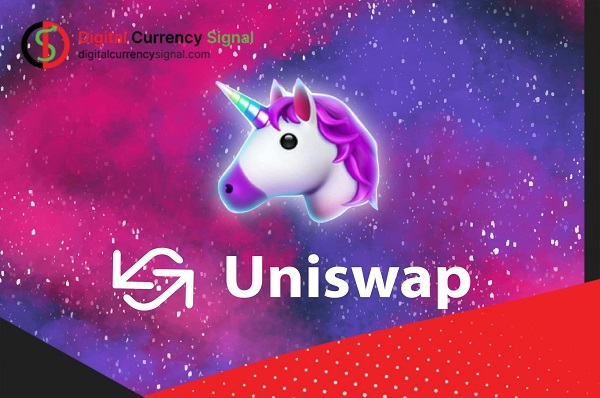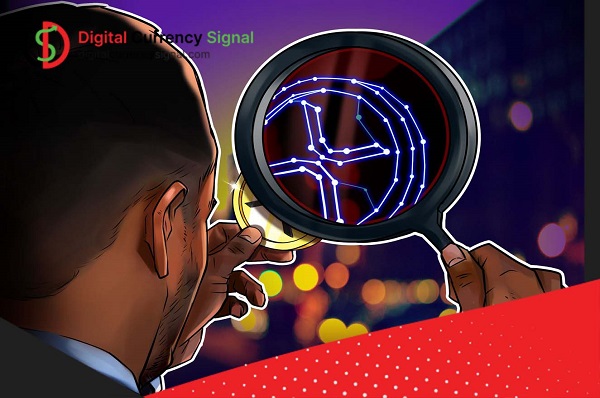Stay with Digital Currency Signal to review the article below
Liquidity Tokens or LPs are special tokens created by decentralized exchanges. Decentralized exchanges or DEX for short are trading platforms where you can hold or manage your assets and do not require intermediary services. When you fund a liquidity pool, the smart contract rewards you based on the amount of tokens you deposit. This is where currency tokens come into play as these tokens are your reward. Because of this, LP has become a very useful member of the token market. This is exactly how automated market makers (AMMs) like Uniswap, Sushi Swap, Pancake Swap and Compound work.
When tokens are deposited into a liquidity pool, the platform automatically generates a new token representing the depositor’s share of that pool. These tokens are called Liquidity Provision Token or LP and can be used for many services on the main platform and even on other DeFi platforms.
Automatic market makers and watermarks
Liquidity tokens are one of the main functions of market makers in automated markets. These tokens ensure that these platforms are not regulated. This means promoting decentralization and fairness through automated activities, rather than holding tokens in both hands. Liquid Token opens new doors for token transactions for users. Easier access to the DeFi ecosystem.
The non-custodial role of automated market makers is central to participation in a decentralized financial ecosystem. Own your assets by accepting Liquidity Provider (LP) tokens to provide liquidity to the pool via automated market makers and by offering tokens such as Ethereum. These signals are generated by computer codes and humans are not involved in their production. Liquid tokens essentially represent the liquidity provider’s share of the pool, giving them full control over their assets.
Let’s take an example. Imagine depositing ten dollar tokens into one of the hundred dollar balance groups. This will give you ten percent pool liquidity tokens. Since you own ten percent of the pool’s shares, the LP tokens actually represent your shares. And with these tokens you can withdraw your deposit at any time without anyone intervening. Since these tokens are ERC-20, they can be easily traded and embedded into other protocols.
What is liquidity?
Liquidity is a core concept in the DeFi space. This term refers to the simple conversion of one asset into another. In traditional finance, cash is considered the most liquid asset because it can be easily converted into gold, stocks, bonds and other assets. However, the currency cannot easily be converted into digital currency. In the digital currency space, Bitcoin is the most liquid asset because it is accepted and traded on almost every central exchange. In the DeFi ecosystem built primarily on the Ethereum network, Ethereum is the most liquid asset and settles on any decentralized exchange.
Prior to the creation of Liquidity Tokens, assets used in the Ethereum ecosystem were inaccessible during their useful lives. In fact, tokens are linked to the system when they are used as part of the governance mechanism. For example, in Ethereum’s Proof-of-Stake consensus mechanism, validating and adding new blocks requires people to deposit and lock their Ether into the network. When a cryptocurrency is blocked it cannot be used and hence the liquidity in the system will decrease.

The creation of convertible assets in automated market makers called Liquidity Provision (LP) tokens has solved the cryptocurrency liquidity problem, at least in the DeFi ecosystem. With token liquidity; A given token can be used multiple times. Even if the token is invested in a DeFi product or given to the network’s governance mechanism. LPs indirectly solve the liquidity problem in the digital currency space in the form of equity.
DiFi with liquidity signal
Since DeFi is an ecosystem with a very high speed of development, the services of this ecosystem are also developing at a high speed. What is referred to in this article as a liquidity token may have a different name depending on the platform. For example, on the Balancer platform, these tokens are known as Balancer Pool Tokens (BPT) or Pool Tokens.
On the UniSwap exchange, these tokens are called pool or liquidity tokens. Crow Platform uses these tokens under the same name as LP or Liquidity Provision Token Although the words are different, the definition is exactly the same. Cash Tokens are actually a mathematical proof that you put tokens into a pool and can use them to increase your fortune.
Another recent concept for the DeFi ecosystem is productive agriculture. The process did not exist in the first half of 2020, but became one of the most popular DeFi services with visibility. The idea behind the production is to insert tokens into various DeFi programs to earn more money. This advantage can be multiplied by sending signals in different protocols.
Agricultural products and financial indicators
Although tokenized returns and liquidity are relatively new ideas in the ecosystem, they are used side by side. To understand how this works, let’s look at the steps involved in forming a CRV token in the Crow protocol using the DAI token:
Deposit DAI tokens into the Crow Money pool.
This is how you get LP tokens.
Deposit the received tokens to the Stakecro pool.
Get CRV token.
In this situation, you earn fees and profits by canceling Crow’s DAI token. At the same time, you can easily earn CRV tickets with your earned LP card. In fact, using the liquidity token doubles your liquidity and you can make a lot of profit by earning commissions and profits on crop farming. There are many new terms, technologies and features that can help you create in the DeFi ecosystem every day, and liquidity tokens are one of them.
Features of the liquidity symbol
We hope that the example and explanations in the previous section have clarified the concept of UNI Token for you. But the question is what other liquidity tokens have. In response, the rules are the same and will be:
Each liquidity token operates under the same blockchain and standard. For example, UNI and Sushi run on Ethereum and use the ERC-20 standard. However, Kik runs on the Binance smart chain and is a BEP-20 model. This means that each token works on its own network and cannot be directly exchanged.
The price of a liquid token depends on the total value of the trading platform, be it DEX or CEX, divided by the total number of tokens.
If LP tokens are burned for any reason, this will positively affect the value of the token, making it rarer and therefore more valuable.

Now, a very important thing to consider is that each DEX platform has its own rules for sending more or less things that affect the price of the token. For example, offering a direct platform like UniSwap adds value to UNI by re-customizing and attracting investment.
Platforms like Land hope that the value of their tokens will increase by following algorithmic models that adjust token supply and value to their needs. This means that in order to get the most out of the LP token, you need to understand the architecture and functionality of the project that issued it. Knowing this, you will know how the value of the token will increase and how far this increase will go.
receive rewards
Currently, the main purpose of a liquidity token is to reward liquidity providers and every platform currently has a way to do this. The most common system is the fair distribution of rewards among pool participants, based on commissions received from the DEX with a certain percentage. Depending on the percentage committed to that goal, the reward will be more or less.
For example, Bit2Me Earn money providers can earn twenty five percent APY to earn rewards when using B2M tokens. This means for every €1,000 per year, Donors will receive €250 per year for their contribution, paid in B2M tokens.
Note, however, that the final APR will decrease as your stake in the fund decreases. (as more people join the company and thus the reward is split between more people) If the APY is 30% in January 2022 and 20% in December, the amount of tokens received will decrease slightly eventually, which which is usually the aggregation of tokens and the revaluation is compensated.
You may think this is unfair, but the truth is that the system is designed to prevent the withdrawal of coins that are no longer in control and not allow their ultimate value to weaken. In short, it is a strategy to stabilize the crypto economy in the ecosystem. This scheme is repeated in most protocols, so it is natural to find new stores of explosive APY.
Conclusion
Different cash tokens can be very useful for launching new products, especially related to DeFi, but due to their utility and many possibilities, cash tokens are used in different platforms like blockchain games or metaverse. go They all do it with a clear purpose. Attract people to these places and increase their acceptance. In any case, the success of cash tokens depends on the product offered, its benefits and the interest generated in the community. If a cash chip accomplishes these things, we may be on the verge of a surefire success. That is, the system is designed to prevent the return of tokens that are no longer in control and not allow their ultimate value to weaken. In short, it is a strategy to balance the crypto-economy in the ecosystem. This pattern is repeated in most protocols, so it is natural to find new explosive APY deposits.



